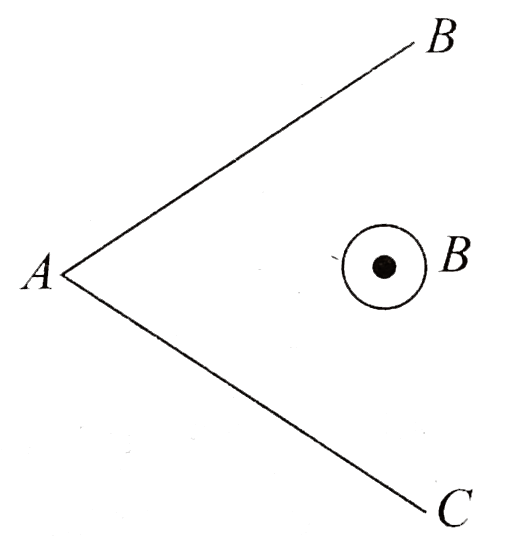BACs and YACs are:
Natural DNA obtained from bacteria and yeast
Useful vectors for eukaryotic gene transfer
Artifical DNA obtained from bacteria and yeast
2 & 3 both
The correct Answer is:D
Step-by-Step Solution:
1. Understanding BAC and YAC:
- BAC stands for Bacterial Artificial Chromosome.
- YAC stands for Yeast Artificial Chromosome.
- Both are types of artificial chromosomes used in genetic engineering.
2. Source of BAC and YAC:
- BAC is derived from bacteria, specifically using components from bacterial cells to create a vector.
- YAC is derived from yeast, utilizing yeast cell components to form its structure.
3. Function of BAC and YAC:
- Both BAC and YAC serve as vectors for gene transfer, particularly useful in eukaryotic cells (which include plants and animals).
- They can carry large fragments of DNA, making them suitable for cloning larger genes or genomic fragments.
4. Characteristics of BAC and YAC:
- They are artificial constructs, meaning they are not naturally occurring but are engineered for specific purposes in biotechnology.
- They can maintain large DNA inserts, typically over 300 kilobases (kb) in size, which is beneficial for genomic studies.
5. Evaluating the Options:
- Option 1: "Natural DNA obtained from bacteria and yeast" - Incorrect, as BAC and YAC are artificial.
- Option 2: "Useful vectors for eukaryotic gene transfer" - Correct, as they are indeed used for this purpose.
- Option 3: "Artificial DNA obtained from bacteria and yeast" - Correct, as they are artificial constructs derived from these organisms.
- Option 4: "Second and third both" - Correct, since both statements in options 2 and 3 are true.
6. Conclusion:
- The correct answer is Option 4: "Second and third both."
---
- BAC stands for Bacterial Artificial Chromosome.
- YAC stands for Yeast Artificial Chromosome.
- Both are types of artificial chromosomes used in genetic engineering.
- BAC is derived from bacteria, specifically using components from bacterial cells to create a vector.
- YAC is derived from yeast, utilizing yeast cell components to form its structure.
- Both BAC and YAC serve as vectors for gene transfer, particularly useful in eukaryotic cells (which include plants and animals).
- They can carry large fragments of DNA, making them suitable for cloning larger genes or genomic fragments.
- They are artificial constructs, meaning they are not naturally occurring but are engineered for specific purposes in biotechnology.
- They can maintain large DNA inserts, typically over 300 kilobases (kb) in size, which is beneficial for genomic studies.
- Option 1: "Natural DNA obtained from bacteria and yeast" - Incorrect, as BAC and YAC are artificial.
- Option 2: "Useful vectors for eukaryotic gene transfer" - Correct, as they are indeed used for this purpose.
- Option 3: "Artificial DNA obtained from bacteria and yeast" - Correct, as they are artificial constructs derived from these organisms.
- Option 4: "Second and third both" - Correct, since both statements in options 2 and 3 are true.
- The correct answer is Option 4: "Second and third both."
Topper's Solved these Questions
- BIOTECHNOLOGY AND MICROBES IN HUMAN WELFAREBOOK - ALLENCHAPTER - BIOTECHNOLOGY AND MICROBES IN HUMAN WELFAREEXERCISE - Exercise II
73 Videos
- BIOTECHNOLOGY AND MICROBES IN HUMAN WELFAREBOOK - ALLENCHAPTER - BIOTECHNOLOGY AND MICROBES IN HUMAN WELFAREEXERCISE - Exercise III
10 Videos
- BIOTECHNOLOGY AND MICROBES IN HUMAN WELFAREBOOK - ALLENCHAPTER - BIOTECHNOLOGY AND MICROBES IN HUMAN WELFAREEXERCISE - Beginners Box -2
5 Videos
- BIOTECHNOLOGY AND ITS APPLICATION BOOK - ALLENCHAPTER - BIOTECHNOLOGY AND ITS APPLICATION EXERCISE - Question
57 Videos
- BODY FLUIDS AND CIRCULATIONBOOK - ALLENCHAPTER - BODY FLUIDS AND CIRCULATIONEXERCISE - S
45 Videos
Similar Questions
Assertion :- BAC & YAC are the common vectors used in HGP.
Reason : In HGP, sequencing was done by automated DNA
sequences that worked on methods of F. Sanger.
View SolutionYAC is
View SolutionIn Figure 2, AB and AC are tangents to the circle with centre O such that angle BAC = 40°. Then angle BOC is equal to
View SolutionIf AP bisects angle BAC and M is any point on AP, prove that the perpendiculars drawn from M to AB and AC are equal.
View SolutionIn Fig 7.23, AB=ACandAD is the bisector of ? BAC. (i) State three pairs of equal parts in triangles ADBandADC. (ii) Is ΔADB[≡~?]ΔADC ? Given reasons. (iii) Is ∠B=∠C ? Given reasons
View SolutionAB, BC and CD are three consecutive sides of a regular polygon. If the angle BAC=20∘, find
(i) its each interior angle
(ii) its each exterior angle
(iii) the number of sides in the polygon.
View SolutionTriangles ABC and DBC are two isosceles triangles on the same base BC and their vertices A and D are on the same side of BC. If AD is extended to intersect BC at P, show that:
AP bisects angle BAC and BDC.
View SolutionAB and AC are boundary lines within which a magnetic field B exists. If the magnetic field is absent, a charged particle of mass m and charge q must have passed through a point P on angle bisector of -BAC, at a distance r(√2) from A, if it has fallen on AB normally at a point Q such that QP =r. If the magnetic field is present, how much time the charged particle will take to come out of the magnetic field

View Solution(a) What do 'Y' and 'B' stand for in 'YAC' and 'BAC' used in Human Genome Project (HGP). Mention their role in the project.
(b) Write the percentage of the total human genome that codes for proteins and the percentage of discovered genes whose functions are known as observed during HGP.
(c) Expand 'SNPs' identified by scientists in HGP.
View SolutionABCD is a quadrilateral in which AB=AD . The bisector of BAC and CAD intersect the sides BC and CD at the points E and F respectively. Prove that EF||BD.
View Solution
